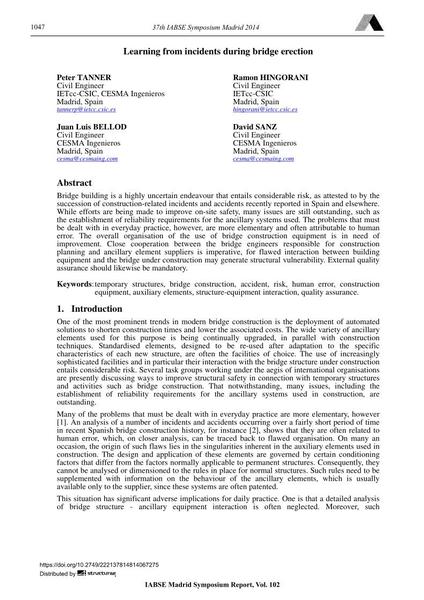Learning from incidents during bridge erection

|
|
|||||||||||
Détails bibliographiques
| Auteur(s): |
Peter Tanner
Ramón Hingorani Juan Luis Bellod David Sanz |
||||
|---|---|---|---|---|---|
| Médium: | papier de conférence | ||||
| Langue(s): | anglais | ||||
| Conférence: | IABSE Symposium: Engineering for Progress, Nature and People, Madrid, Spain, 3-5 September 2014 | ||||
| Publié dans: | IABSE Symposium Madrid 2014 | ||||
|
|||||
| Page(s): | 1047-1054 | ||||
| Nombre total de pages (du PDF): | 8 | ||||
| Année: | 2014 | ||||
| DOI: | 10.2749/222137814814067275 | ||||
| Abstrait: |
Bridge building is a highly uncertain endeavour that entails considerable risk, as attested to by the succession of construction-related incidents and accidents recently reported in Spain and elsewhere. While efforts are being made to improve on-site safety, many issues are still outstanding, such as the establishment of reliability requirements for the ancillary systems used. The problems that must be dealt with in everyday practice, however, are more elementary and often attributable to human error. The overall organisation of the use of bridge construction equipment is in need of improvement. Close cooperation between the bridge engineers responsible for construction planning and ancillary element suppliers is imperative, for flawed interaction between building equipment and the bridge under construction may generate structural vulnerability. External quality assurance should likewise be mandatory. |
||||
| Mots-clé: |
construction de ponts risque
|
||||
